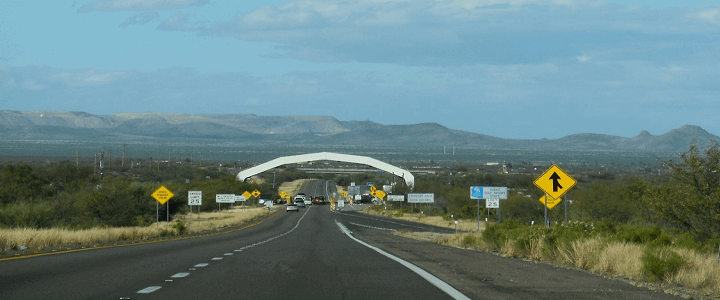Another “caravan” of somewhere between 3,500 and 7,000 Central American migrants is making its way north through Mexico, aiming for the U.S. border. A second group has crossed from Honduras to Guatemala. And to stop them from crossing into the U.S., the president has ordered what the Department of Defense is calling operation Faithful Patriot.
Monday afternoon, Customs and Border Protection Commissioner Kevin McAleenan and U.S. Northern Command Commander Gen. Terrence O’Shaughnessy held a join press conference to discuss how the U.S. government is preparing to confront this bold challenge to national sovereignty. And make no mistake, thousands of people claiming to be seeking asylum, who have already forced their way across two international borders, may not present a threat to national security, but they do present a challenge to the country’s right to control who may or may not enter our territory.
McAleenan announced formally what should have been obvious: the government “will not allow a large group to enter the United States in an unsafe and unlawful manner.”
There’s so much hyperbole and fear-mongering from all sides, that it’s worth taking a moment to look at what the legal aspects of the situation are.
What is Asylum?
First of all, asylum is not a right under international law, but asking for asylum is. Furthermore, there is a concept called “first country asylum” or “safe country asylum” that prevents asylum seekers from shopping around for the best deal.
In 1990, the European Union adopted the Dublin Convention, which states that anyone seeking asylum in the EU must do so in the first country they enter. So, for instance, France can return an asylum-seeker to Italy if it learns the refugee was in Italy before traveling to France. The concept has spread to much of the rest of the world as a way of sharing the burden of evaluating and processing asylum claims.
The U.N. High Commissioner for Refugees acknowledged the legitimacy of the concept a year after the EU adopted the Dublin Convention. The commission wrote, “The application of the ‘safe country’ concept is also generally consistent with the position, which UNHCR supports, that there should be means to identify the State responsible for examining an asylum request, so as to avoid orbit situations and multiple, simultaneous asylum requests by any one applicant.”
So when refugee rights organizations say that asylum seekers are not “required” to apply in the first safe country they enter they are technically correct. But it is equally true that the U.S. is not obligated to process an asylum claim from a Honduran national who presents himself at a station along the U.S.-Mexico border. Instructing the applicant, as border patrol agents have done, to apply in Mexico is not any sort of violation.
One final note: if you hear a reporter say something like “it’s unclear how the troops heading to the border will be employed, as it’s generally illegal for active duty troops to aid in domestic law enforcement,” change the channel and don’t trust anything you hear that reporter say again.
I covered this in April when the last “caravan crisis” was upon us, but I’ll recap. The Posse Comitatus Act, first passed in 1878, prohibits using the Army and the Air Force for domestic law enforcement. But there are two problems with trying to apply that law to the current border situation.
The first is that the exception to the law is expansive. It allows for military law enforcement when “expressly authorized by… Act of Congress.” While there are probably several laws that the president could lean on, the most convenient is the Insurrection Act. If the president finds that the situation makes it impossible to enforce the laws normally, he’s authorized to send the military. One presumes thousands of migrants trying illegally to cross the border en masse would make it impossible to enforce the law normally.
But beyond that, the idea that using the armed forces to repel any organized group at the border constitutes domestic law enforcement is just silly. In 1916, President Woodrow Wilson sent Gen. John Pershing across the border into Mexico to put an end to Mexican revolutionary Pancho Villa’s assaults on American border towns. It wasn’t domestic law enforcement then, and if the caravan turns out not to be merely seeking asylum, but intent on crossing the U.S.-Mexico Border the way it crossed the Mexico-Guatemala border, it won’t be law enforcement then.




